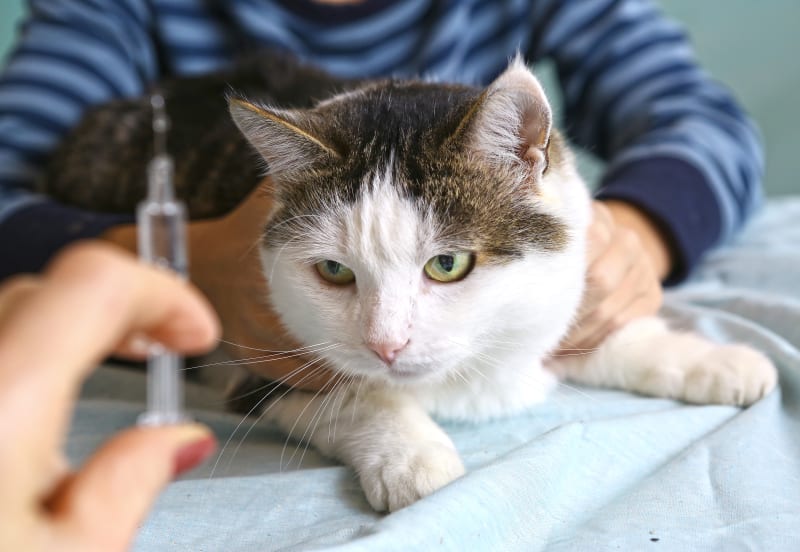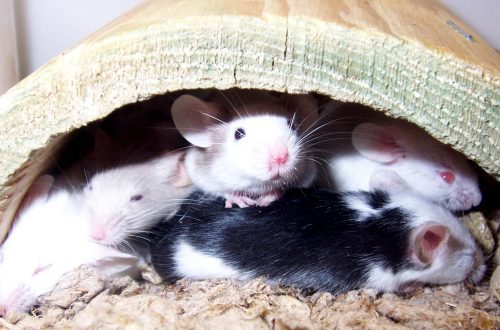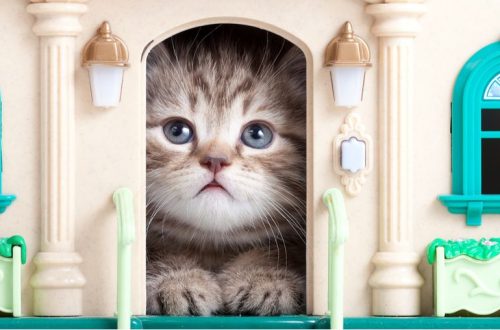
Rabies in cats and cats: symptoms, methods of transmission, forms of leakage, precautions and prevention
Rabies is a serious disease in all mammals. The nervous system is affected. This occurs when the virus enters the circulatory system of the animal’s body through damaged areas of the skin. The virus enters along with the saliva of an infected animal.
The process of action of the virus is very complex and has not yet been fully studied by scientists. It is known that through the blood it moves to the nerve fibers and penetrates into them. The virus affects neurons, which leads first to their death, and then to the death of the virus carrier itself.
Previously, it was believed that only wild animals were susceptible to the disease.
This is not true. Recently an increase in the incidence of rabies and pets. In this case, cats are more susceptible to the disease. Pet owners should be aware of the first signs of rabies in cats.
Any warm-blooded animal can be a carrier of rabies. These include rodents, dogs and foxes, wolves, hedgehogs, bats, cats. In sick animals, the instinct for self-preservation is blunted, so aggression is growing. How is rabies transmitted in cats?
Contents
Methods of transmission of the virus
The owner of the animal needs to know how rabies is transmitted in order to protect himself and his pet from infection with the virus:
- a bite of a healthy animal by a sick one;
- eating a virus carrier;
- through microcracks on the skin (saliva).
At the taste of the virus first enters the dorsaland then to the brain. It will be transmitted very quickly to tissues and organs, as well as to the salivary glands. This is where saliva infection occurs.
Rats and mice prefer to settle in the adjacent areas or in the basements of multi-storey buildings. If a cat eats a mouse or rat infected with rabies, then no one can give a guarantee that he will not get rabies.
If contact with a virus carrier has occurred, then not a single symptom of the disease will be immediately noticeable. The virus must spread throughout the body. The latent period in an adult animal lasts from two to six weeks. For kittens – up to a week.
Symptoms of rabies in domestic cats
The first symptoms are often misdiagnosed, as all signs of an intestinal infection or respiratory disease are visible:
- loss of appetite;
- lethargy or aggressiveness;
- lethargy or restlessness;
- convulsions or paralysis;
- unexpected death.
The most indisputable symptom of rabies in cats is spasm of the swallowing muscles. The animal cannot drink water.
The next symptom is corneal clouding and strabismus.
The owner should know how to identify rabies in a cat. She is becomes dangerous to humans. already a few days before the onset of symptoms. The rabies virus can be transmitted to humans through the saliva of a pet.
It is necessary to closely monitor the behavior of the animal. A cat with rabies will have behavioral changes. The cat may become violent, atypical, or simply change its behavior slightly.
Stages of development of rabies in cats
The development of the disease is divided into several stages:
- early symptoms of the disease;
- arousal stage. The cat begins to bite, scratch or become suspiciously friendly;
- salivation and paralysis of the muscles of the larynx and mouth.
Especially dangerous in cats is the last sign of rabies. Symptoms (paralysis) will quickly lead to cat coma and death within a short time.
Forms of the disease in cats
Exuberant form
The cat loses its appetite, it tries not to approach the owner, does not respond to the nickname. But it happens that the cat becomes suspiciously affectionate. Further fearfulness or aggression may suddenly appear to the owner;
She will scratch the bite site, she can swallow an inedible object. Will refuse to drink due to throat spasms. Strong salivation will begin. There will be sudden fits of rage. The cat will rush at the person, bite and scratch;
Then the aggressive state of the cat will change to oppressed. She, exhausted, will lie quietly. But she will again rush at people if she hears even a faint sound;
Animal will refuse any food and lose weight, the voice will disappear, the jaw will drop, the tongue will fall out of the mouth. The cornea of the eyes becomes cloudy, strabismus appears. The hind legs will fail, and then the front legs. Paralysis will cover the internal organs. The cat will die within a week.
Easy form
Nervousness and a desire to bite a person appear. Saliva is strongly secreted, the jaw droops. The lower jaw and hind legs are paralyzed. Blood will appear in the secretions from the intestines. With this (paralytic) form of the disease, the animal dies after three days.
Atypical form
The cat quickly and strongly loses weight. There is apathy, weakness, drowsiness. Diarrhea with blood, vomiting and emaciation. The illness can last for a long time. Rabies in this form is difficult to recognize – the animal can get sick for up to six months. There may be moments of improvement in the condition of the cat, but a fatal outcome is inevitable. Only a veterinarian can determine the presence of rabies and always in a hospital.
Safety measures
All forms of rabies are incurable and dangerous to humans. Vaccination can protect your pet from infection. A specialist will quickly determine rabies in cats. Symptoms are visible even without special tests. Vaccination will be done in a veterinary clinic. First time vaccinations can only be done from the age of three months cats. Previously, the animal should not be vaccinated.
The cat must be healthy before vaccination. Pregnant cats and while feeding babies are not vaccinated. If any symptom of the disease is noticeable, then the vaccination should be postponed. Do not vaccinate kittens at the time when there is a change of teeth, weakened by trauma or stress of adult cats. Re-vaccination of the cat – after three years.
If a person has been bitten by a rabies-infected animal, treat the wound immediately and get vaccinated in a medical facility.
If the cat came from a walk with scratches or bites, then he must also be urgently taken to the clinic. And even if he has already been vaccinated, he will be re-vaccinated. And at least a month the cat will be under observation.
Rabies Prevention
Deratization will reduce the likelihood of animals infected with rabies in residential buildings and garden plots.
A modern vaccine will not be able to harm the health of a cat. The virus contained in the vaccine will not multiply.
Prevention of rabies in domestic cats is in annual pet vaccinations against rabies. It is very dangerous to ignore the vaccination of an animal, even if the cat does not go outside.
It is important to remember that a cat’s rabies is its inevitable death. There are no treatments for humans. That is why the owner of the animal should not neglect the preventive course of treatment.





